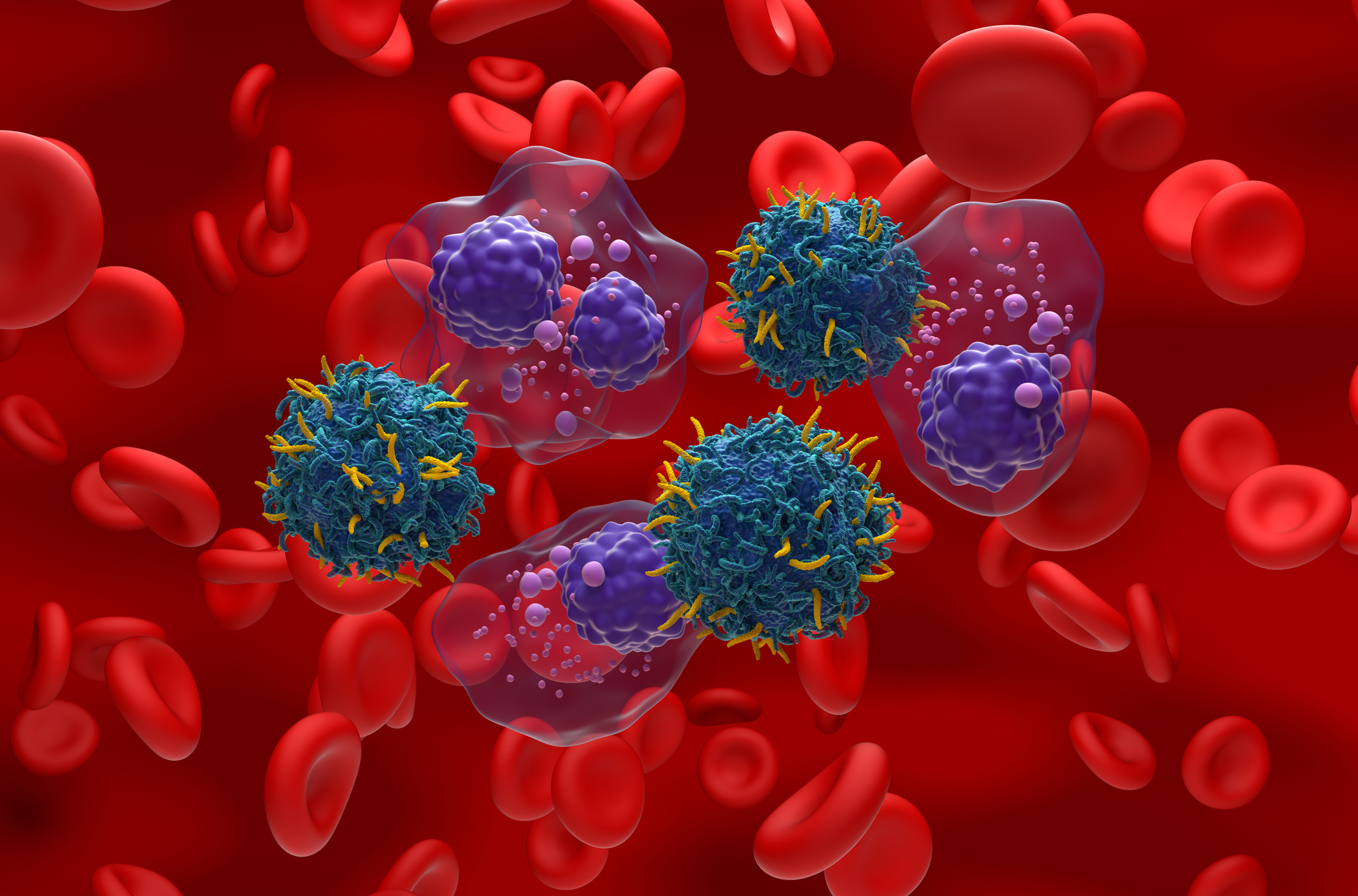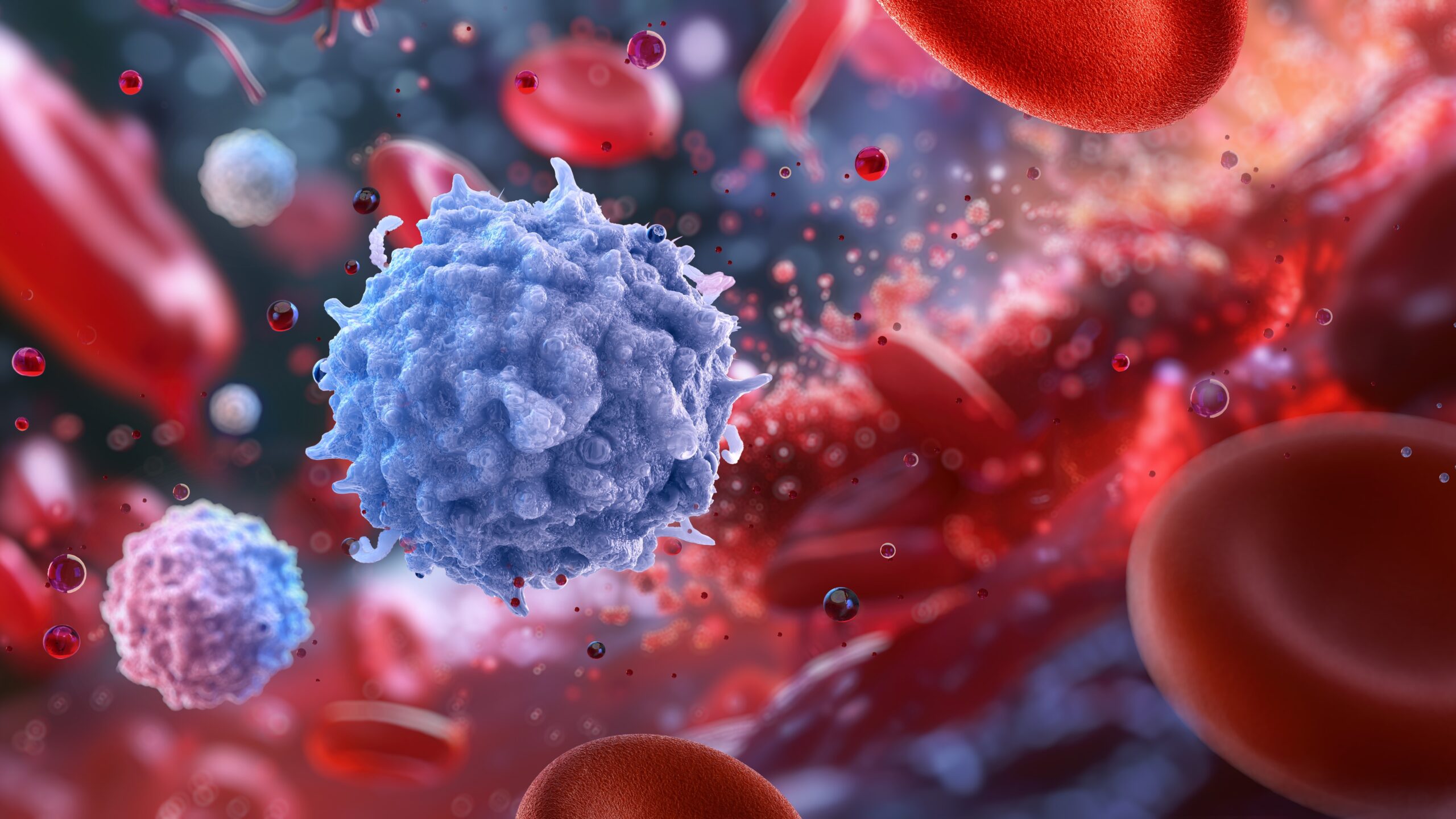
A new method to detect minimal residual disease (MRD) in peripheral blood had an “unprecedented sensitivity” level of 10−8 in samples from patients with multiple myeloma, according to a recent study.
Laura Notarfranchi, MD, of the University of Parma in Italy, and colleagues conducted the research and presented their findings during the 2022 American Society of Hematology Annual Meeting and Exposition.
They conducted the research because assessing MRD in bone marrow with next-generation flow or next-generation sequencing processes “precludes periodic evaluations because of its invasiveness” and MRD assessment in peripheral blood “could overcome this limitation.”
However, the clinical value of peripheral blood MRD assessment is “not established,” Dr. Notarfranchi and colleagues wrote. The negative predictive value when compared to bone marrow is less than 70%, as the tumor burden in peripheral blood is much lower than in bone marrow, which requires methods that can detect MRD below 10−6 to improve concordance.
They first aimed to investigate the prognostic value of using next-generation flow to assess MRD in peripheral blood samples, and then aimed to develop a new method with increased sensitivity.
“To avoid high staining costs and impractically long acquisition periods, a new method integrating immunomagnetic enrichment using MACS® MicroBeads prior NGF was developed and coined as BloodFlow,” Dr. Notarfranchi and colleagues wrote.
Detecting MRD in Peripheral Blood Samples with Next-Generation Flow
Dr. Notarfranchi and colleagues evaluated MRD in 138 patients with multiple myeloma by using next-generation flow on peripheral blood samples from the second year of maintenance therapy, when patients stopped treatment if they were MRD negative in bone marrow, or continued therapy for three more years if they were MRD positive at that time.
They found 15 (12%) patients were MRD positive, with a median progression-free survival (PFS) of 22 months since MRD testing, which was significantly inferior to the median PFS of patients who had undetectable MRD in peripheral blood samples. The two-year PFS rate was also significantly lower in patients with detectable MRD (50%) than in those with undetectable MRD (98%; P<.0001) in peripheral blood samples.
However, of the 123 patients with undetectable MRD in peripheral blood samples, 27% had persistent MRD in bone marrow. Those patients had significantly lower two-year PFS rates (62%) than patients who had undetectable MRD in peripheral blood and bone marrow (100%; P<.0001).
“The results from this part of the study confirmed the prognostic value of MRD assessment using [next-generation flow] in [peripheral blood] and emphasized the importance of increased sensitivity to reduce the number of false-negative results in [peripheral blood vs bone marrow],” Dr. Notarfranchi and colleagues wrote.
Evaluating MRD Detection in Peripheral Blood Samples with BloodFlow
In the second part of the study, the investigators developed an optimized BloodFlow protocol after comparing lysing methods and MircoBeads combinations for “optimal enrichment” of circulating plasma cells. Initial testing in peripheral blood samples from healthy people showed, on average, an 82-fold increment in the number of circulating normal plasma cells with BloodFlow compared to next-generation flow. They also performed dilution experiments in multiple myeloma cell lines and found they could detect to 1×10−7 tumor cells.
Dr. Notarfranchi and colleagues magnetically labeled samples of peripheral blood that were approximately 50 mL and processed them with MACS® columns. They also analyzed 100µL aliquots enriched with circulating plasma cells using EuroFlow next-generation flow to examine the concordance between MRD assessment with BloodFlow and next-generation flow.
The researchers compared BloodFlow with next-generation flow in 353 peripheral blood samples that they collected in different treatment scenarios. BloodFlow detected MRD in 9% of samples, with 58% of those samples showing MRD negativity on next-generation flow. All cases of MRD negativity according to BloodFlow were also MRD negative by next-generation flow. The lowest MRD level was 6×10−8.
They subsequently compared the performance of BloodFlow with next-generation flow in 199 paired samples from peripheral blood and bone marrow of patients with multiple myeloma. Concordance occurred in 69% of double-negative samples and in 9.5% of double-positive samples. MRD was detected in bone marrow but not in peripheral blood in 20.5% of paired samples, while 1% were negative in bone marrow but positive in peripheral blood. BloodFlow had a negative predictive value of 77% compared with next-generation flow in bone marrow.
“MRD assessment during induction and intensification was the feature more frequently associated with a false-negative result using BloodFlow,” the study’s authors wrote, noting that reduced peripheral blood cellularity and MRD levels < 10−5 in bone marrow were also associated with a false-negative result using BloodFlow.
“BloodFlow detected MRD in [peripheral blood] more frequently than [next-generation flow], with a consequent decrease in the number of cases with persistent MRD in [bone marrow] while undetectable in [peripheral blood], which were more frequent during early and intensive treatment stages,” Dr. Notarfranchi and colleagues concluded. “These results suggest the possibility of periodic and ultra-sensitive MRD assessment in [peripheral blood] during maintenance/observation.”
Reference
Notarfranchi L, Zherniakova A, Lasa M, et al. Ultra-sensitive assessment of measurable residual disease (MRD) in peripheral blood (PB) of multiple myeloma (MM) patients using Bloodflow. Abstract #865. Presented at the 64th ASH Annual Meeting and Exposition; December 10-13, 2022; New Orleans, Louisiana.






 © 2025 Mashup Media, LLC, a Formedics Property. All Rights Reserved.
© 2025 Mashup Media, LLC, a Formedics Property. All Rights Reserved.